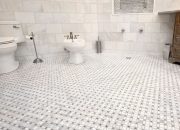DIY Outdoor Easter Egg Decoration Ideas

Creating charming and durable outdoor Easter egg decorations is easier than you might think. With a little creativity and the right materials, you can transform ordinary eggshells into festive additions to your garden, porch, or yard, lasting well beyond Easter Sunday. This discussion will explore three unique DIY projects, focusing on weatherproofing techniques and repurposing everyday items.
Weatherproofing and Durability Techniques for Outdoor Easter Eggs, Outdoor easter egg decor
To ensure your outdoor Easter egg decorations withstand the elements, careful consideration of weatherproofing is crucial. The key is to create a protective barrier that prevents moisture absorption and cracking. Several techniques can be employed, depending on the chosen materials and decoration style. For instance, sealing with a clear acrylic sealer is a highly effective method for protecting painted eggshells.
Multiple thin coats applied at intervals allow for better penetration and a more durable finish. Alternatively, decoupage techniques, where paper or fabric are glued onto the eggshell and sealed, offer a robust and weather-resistant option. Finally, using waterproof paints and sealants specifically designed for outdoor use is paramount for longevity. Remember that direct sunlight and extreme temperature fluctuations can still affect even the most durable decorations, so strategic placement is also important.
Three Unique DIY Outdoor Easter Egg Decoration Projects
Let’s delve into three distinct projects showcasing different techniques and materials.
- Project 1: Mosaic Easter Eggs: This project involves creating vibrant mosaic eggs using broken ceramic tiles or colorful glass pieces. Materials needed include: clean and dried eggshells (real or plastic), small pieces of ceramic tile or colored glass, strong adhesive (like epoxy glue), grout, and a sealant. The process involves carefully gluing the tile or glass pieces onto the eggshell, creating a textured mosaic pattern.
Once the adhesive is dry, grout the gaps between the pieces, and finally, seal the entire egg with a waterproof sealant for outdoor durability. Imagine the stunning effect of sunlight reflecting off the mosaic pieces in your garden!
- Project 2: Painted and Decoupaged Easter Eggs: This project combines painting with decoupage for a layered and textured effect. Materials include: clean and dried eggshells, acrylic paints (waterproof outdoor variety), decoupage medium (like Mod Podge), patterned napkins or fabric scraps, and a clear acrylic sealant. First, paint the eggshells with your chosen base colors. Once dry, apply decoupage medium to sections of the egg and adhere the patterned napkins or fabric.
Seal the entire egg with multiple coats of the acrylic sealant to create a waterproof barrier. This technique allows for intricate designs and a more whimsical aesthetic.
- Project 3: Nature-Inspired Easter Eggs: This project utilizes natural materials for a rustic and eco-friendly approach. Materials needed include: clean and dried eggshells, natural elements such as small twigs, leaves, moss, and seeds, strong adhesive (like hot glue), and a clear acrylic sealant. Carefully glue the natural elements onto the eggshell, creating a unique nature-inspired design. Seal the egg with several coats of waterproof sealant to protect the natural materials and the eggshell from the elements.
Okay, so you’re all about that cute outdoor Easter egg decor, right? But let’s be real, once Easter’s done, you’re probably already thinking about the next big thing: Christmas! Check out these amazing options for outdoor christmas decor large to get you inspired. Then, after the festive season, you can totally reuse those creative outdoor display ideas for next year’s Easter egg hunt, just with a different colour scheme!
These eggs blend seamlessly with a natural garden setting.
Repurposing Everyday Items for Unique Outdoor Easter Egg Decorations
Transforming ordinary household items into festive Easter egg decorations adds a unique touch to your outdoor display. Consider using plastic Easter eggs as small planters, filling them with colorful potting soil and miniature flowers. Alternatively, empty tin cans, after thorough cleaning and painting, can be shaped into egg forms and decorated with vibrant colors and patterns. Even old buttons, beads, and ribbons can be used to create stunningly textured and colorful egg designs.
The possibilities are truly limitless; the key is to let your creativity guide you in transforming the mundane into the magical.
Placement and Arrangement of Outdoor Easter Egg Decor
Strategic placement and artful arrangement of Easter eggs significantly enhance their visual appeal and contribute to the overall festive ambiance of your outdoor space. Consider the setting, the size and color of your eggs, and the desired effect when planning your display. A well-executed arrangement can transform a simple decoration into a captivating focal point.
Placement in Various Outdoor Settings
The ideal placement of Easter eggs varies depending on the specific outdoor setting. In gardens, eggs can be nestled amongst blooming flowers, tucked beneath shrubs, or strategically placed along garden paths. Imagine vibrant pastel-colored eggs peeking out from beneath lush green foliage, creating a delightful surprise for onlookers. On lawns, consider creating larger-scale displays, perhaps using a path or border as a guide.
For porches, eggs can be arranged in baskets, hung from railings, or even placed on windowsills, adding a touch of Easter cheer to the entrance of your home. A porch arrangement could feature a collection of eggs in varying sizes and colors, creating a visually rich display.
Arrangement Techniques for Visual Appeal
Different arrangement techniques create unique visual effects. Clustering eggs together creates a sense of abundance and vibrancy. Imagine a cluster of brightly colored eggs nestled in a flowerbed, mimicking a natural springtime bloom. Linear arrangements, such as lining eggs along a garden path or fence, provide a sense of order and elegance. A line of eggs in graduating shades of purple, from deepest violet to pale lavender, along a stone wall would be striking.
Scattering eggs randomly across a lawn evokes a more playful and whimsical feel. This method works best with a large number of eggs, creating a sense of a spontaneous Easter egg hunt. The key is to experiment and find the arrangement that best suits your personal style and the specific location.
Comparative Analysis of Arrangement Types
| Arrangement Type | Visual Impact | Suitable Location | Materials Used |
|---|---|---|---|
| Clustered | Dense, vibrant, abundant | Flowerbeds, beneath shrubs, in baskets | Eggs of varying sizes and colors, possibly natural elements like moss or twigs |
| Linear | Ordered, elegant, refined | Garden paths, fences, along walls | Eggs of similar size and color, possibly with a coordinating ribbon or twine |
| Scattered | Playful, whimsical, spontaneous | Lawns, large open spaces | Many eggs of varying sizes and colors |
| Layered | Dimensional, complex, intriguing | Porches, steps, tiered planters | Eggs of various sizes and colors, possibly with additional decorative elements |
Thematic Outdoor Easter Egg Decor Ideas

Creating themed Easter egg displays elevates your outdoor décor from simple decoration to a captivating experience. By carefully selecting colors, patterns, and incorporating natural elements, you can transform your yard into a whimsical wonderland that tells a story and delights visitors. This approach allows for a more personalized and engaging Easter celebration.
Peter Rabbit Theme
This charming theme centers around Beatrix Potter’s beloved character. Imagine a whimsical garden scene featuring eggs painted in muted greens, browns, and creams, reminiscent of Peter Rabbit’s natural surroundings. The eggs could be decorated with simple brushstrokes to mimic textures like grass and bark, or adorned with tiny hand-cut paper carrots and leafy sprigs. To enhance the Peter Rabbit theme, incorporate natural elements such as real carrots (carefully placed to avoid rotting), miniature flower arrangements in small terracotta pots (mimicking Mr.
McGregor’s garden), and perhaps even a tiny scarecrow crafted from twigs and twine. The eggs could be strategically placed amongst potted herbs and flowering plants, creating a miniature version of Peter Rabbit’s world. Arranging the eggs along a winding path or nestled amongst garden rocks further enhances the narrative, suggesting a playful journey through the garden.
Spring Blooms Theme
A Spring Blooms theme celebrates the vibrant colors and textures of springtime. Pastel-colored eggs form the base, decorated with floral patterns using paint, markers, or even decoupage techniques. Consider using vibrant shades of pink, purple, yellow, and orange, reflecting the explosion of color in a spring garden. Intricate floral designs, delicate brushstrokes, or even pressed flowers glued onto the eggshells can create a stunning visual effect.Natural elements are key here.
Freshly cut flowers, such as tulips, daffodils, and hyacinths, can be artfully arranged around the eggs, complementing their colors and patterns. Delicate sprigs of greenery and blossoming branches can be woven into the display, creating a sense of organic beauty. The placement of the eggs should mimic the natural growth of flowers, clustering them together in groups of varying heights and sizes to create a visually interesting arrangement.
Imagine eggs nestled amongst blooming flowerbeds or placed along a garden fence, mirroring the natural beauty of the spring season.
Pastel Paradise Theme
This theme embraces a softer, dreamier aesthetic. Pastel-colored eggs in shades of lavender, mint green, baby blue, and soft pink are the foundation. These eggs can be decorated with simple patterns, such as polka dots, stripes, or delicate swirls, or left plain for a minimalist look. The focus here is on the overall color palette and the harmonious arrangement of the eggs.To enhance the Pastel Paradise theme, incorporate soft, fluffy materials like faux fur, ribbons, and lace.
Consider using pastel-colored moss, small stones, and delicate feathers to create a textural contrast. The arrangement of the eggs should be carefully planned to create a sense of calm and serenity. Think about placing the eggs in a symmetrical pattern, perhaps around a central focal point like a birdbath or a small fountain. Or, arrange them in a flowing, cascading pattern, creating a visually pleasing and calming effect.
The overall effect should be one of gentle beauty and tranquility.
FAQ Compilation
How long will outdoor Easter eggs last?
It depends on the materials and weatherproofing. Well-sealed eggs can last several weeks, but you might need to replace them if there’s heavy rain or extreme weather.
What if I don’t have a garden?
No worries! You can create stunning displays on your porch, patio, balcony, or even windowsills. Get creative with your placement!
Are there any safety concerns with outdoor Easter eggs?
Use non-toxic paints and sealants, especially if you have pets or small children. Avoid placing eggs where they could be easily stepped on or damaged.
Can I use real eggs?
While possible, it’s not recommended for outdoor use due to their fragility and susceptibility to cracking. Use craft eggs instead.












